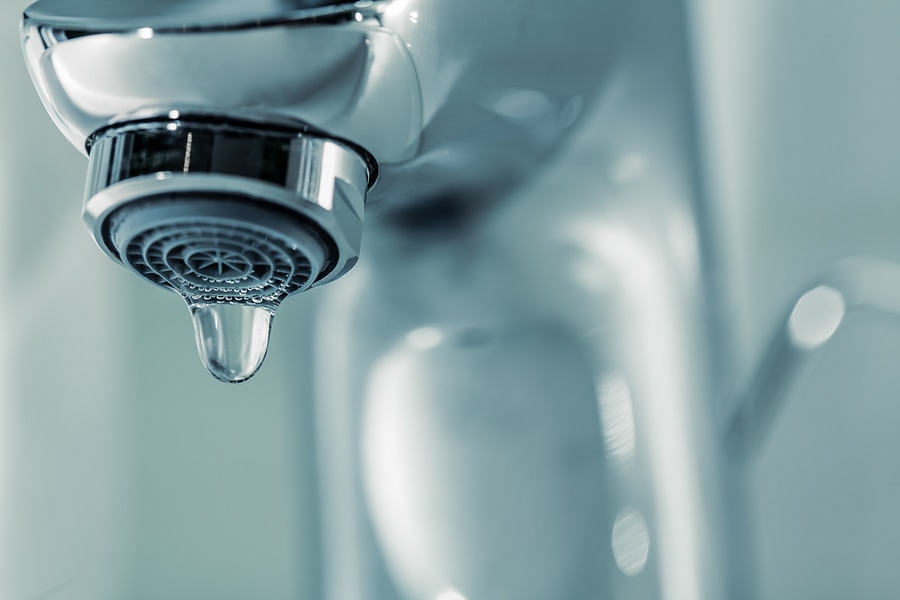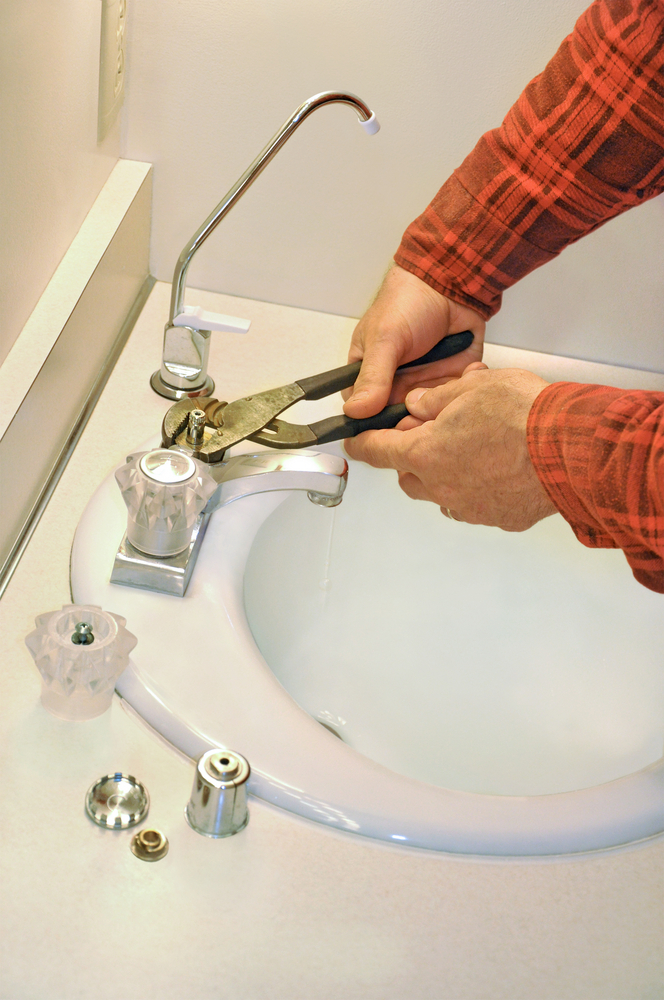Understanding the Significance of Dealing with a Malfunctioning Faucet
Understanding the Significance of Dealing with a Malfunctioning Faucet
Blog Article
We've unearthed this post pertaining to 4 Common Reasons for a Leaky Faucet directly below on the internet and reckoned it made sense to quickly share it with you here.

Trickling taps might feel like a minor trouble, however their effect goes beyond simply the inconvenience of the noise. From wasting water to sustaining unneeded financial expenses and wellness dangers, ignoring a trickling faucet can bring about different repercussions. In this write-up, we'll look into why it's essential to address this usual family problem quickly and effectively.
Wastefulness of Water
Ecological Influence
Leaking taps add considerably to water waste. According to the Environmental Protection Agency (EPA), a single tap trickling at one drip per secondly can waste greater than 3,000 gallons of water per year. This not only stress water sources however likewise influences ecosystems and wild animals based on them.
Financial Costs
Raised Water Expenses
Past the environmental effect, dripping taps can pump up water bills significantly. The collected wastefulness in time converts into greater energy expenses, which can have been prevented with timely fixings.
Possible Building Damages
Additionally, prolonged dripping can bring about harm to fixtures and surfaces bordering the tap. Water build-up can cause discoloration, deterioration, and also structural concerns if left unattended, causing extra repair service expenses.
Health Concerns
Mold and Mold Growth
The consistent existence of wetness from a dripping faucet produces an excellent atmosphere for mold and mildew and mildew development. These fungis not just jeopardize interior air top quality yet additionally position health threats, particularly for individuals with respiratory conditions or allergic reactions.
Waterborne Illness
Stationary water in dripping faucets can become a breeding ground for bacteria and various other pathogens, enhancing the risk of waterborne illness. Contaminants such as Legionella bacteria thrive in stagnant water, potentially leading to major diseases when consumed or breathed in.
DIY vs. Expert Repair work
Benefits and drawbacks of Do It Yourself Repair
While some may attempt to take care of a trickling faucet themselves, do it yourself repair work include their own collection of obstacles. Without proper understanding and tools, DIY efforts can exacerbate the issue or bring about insufficient fixings, extending the issue.
Advantages of Working With an Expert Plumber
Employing a professional plumber makes certain that the underlying source of the trickling faucet is attended to effectively. Plumbing professionals have the knowledge and devices to detect and repair faucet problems successfully, conserving time and reducing the danger of more damages.
Step-by-Step Overview to Repairing a Dripping Faucet
Tools Required
Before attempting to fix a dripping faucet, gather the essential tools, consisting of a flexible wrench, screwdrivers, substitute parts (such as washers or cartridges), and plumber's tape.
Usual Tap Issues and Their Solutions
Identify the type of tap and the specific issue causing the drip. Typical issues include worn-out washing machines, rusty valve seats, or defective O-rings. Describe supplier instructions or online tutorials for detailed guidance on fixings.
Preventive Measures
Routine Maintenance Tips
To prevent trickling faucets, execute regular maintenance such as cleansing aerators, examining for leaks, and changing damaged parts immediately. Furthermore, take into consideration installing water-saving gadgets or updating to extra efficient components.
Importance of Prompt Repair Works
Resolving trickling faucets as soon as they're discovered avoids additional water waste and potential damages, eventually saving both water and cash over time.
Influence On Property Value
Perception of Well-Maintained Residential Or Commercial Property
Keeping a property in good condition, including addressing maintenance issues like leaking faucets, enhances its regarded worth and desirability amongst possible customers or occupants.
Influence on Resale Worth
Qualities with well-maintained plumbing components, consisting of faucets, command higher resale values in the realty market. Dealing with leaking faucets can add to a favorable impact throughout building assessments and negotiations.
Ecological Obligation
Individual Contribution to Conservation
Taking duty for repairing leaking taps lines up with wider initiatives towards water preservation and ecological sustainability. Every person's activities jointly make a considerable effect on protecting valuable sources.
Lasting Living Practices
By focusing on prompt repair services and taking on water-saving behaviors, individuals contribute to lasting living methods that benefit both existing and future generations.
Final thought
Attending to a dripping tap exceeds mere ease; it's a necessary action towards preserving water, lowering monetary prices, and protecting health and home. Whether via DIY fixings or expert assistance, doing something about it to repair trickling faucets is a small yet impactful means to promote liable stewardship of resources and add to a healthier, extra lasting future.
How to Fix a Leaky Faucet: Step-by-Step Repair Guide
A leaky faucet may seem like a simple annoyance, but if it's not fixed promptly, that leak could cost hundreds to potentially thousands. From water damage to mold, mildew, and high water bills, even a tiny leak can be catastrophic if left unattended. Damage like this can even affect the overall value of your home, so it's important to take the right approach for leaky faucet repair. You may need the help of a plumber in some cases, but we've got a few tips you can try on how to fix a leaky faucet before calling the pros.
Four Faucet Types
When you're learning how to fix a leaky faucet, the first step is knowing what kind of faucet you're working with! There are four common types.
Cartridge Faucets
Cartridge faucets come in one- or two-handled varieties. In one-handled cartridge faucets, hot and cold water combines in a single cartridge. In the two-handled versions, hot and cold water are controlled separately and mixed in the faucet.
Ball Faucets
Ball faucets have a single lever you push up and down to adjust the pressure and rotate to change the temperature. A slotted metal ball controls the amount of water allowed into the spout.
Compression Washer Faucets
They're the oldest type of faucet, but they're still used in many homes — especially older ones. Compression faucets have two separate handles that, when turned, raise or lower the washer that seals a water valve. This valve stops water from flowing through the faucet when it is turned off.
Disc Faucets
Disc faucets rarely need to be repaired due to their maintenance-free design. The water flow is controlled by two discs — the upper one raises and lowers against a fixed lower disc, creating a watertight seal. If your disc faucet starts leaking, you may need to replace the seals or clean residue buildup from the inlets.
Fixing a Leaky Faucet
Step 1: Turn Off the Water
Whether you're learning how to fix a leaky bathtub faucet or how to fix a leaky kitchen faucet, always turn off the water supply to your working area when you're fixing a leak. The last thing you want is a flood added to your list of things to fix.
Look for the shutoff valves below your sink or around the tub and turn them clockwise to stop the water flow. If your faucet doesn't have shutoff valves, you may need to turn off the water for the whole house. Check to make sure it's off by turning the faucet on. If nothing comes out, you're ready to start the repair.
Step 2: Take Apart the Faucet
How you disassemble your faucet depends on the type of fixture you have. You can use a flathead screwdriver to remove the caps on top of the handle or handles for cartridge and compression faucets. Inside, you should see handle screws. Unscrew these with a screwdriver to remove the handle.
Disc- and ball-style faucets will typically have an inlet screw near the handle, and removing that will reveal the interior of the faucet.
Detach the Valve Stem
For cartridge- and compression-style faucets, you'll see the inner valve stem or cartridge once you remove the faucet handles. If you have a compression faucet, unscrew the brass valve stem. If you have a cartridge faucet, pull out the cartridge. If your cartridge has been in place for a while, it may require some tools or extra force to remove it due to mineral deposits.
Examine and Replace Parts
Once you've removed the parts, check them out to confirm what needs to be replaced. You may see corroded rubber washers, O-rings, stems, or cartridges. On a ball-style faucet, check the seats and springs for damage.
If you need to repair a leaky disc faucet, check the inlet and seals on the lower disc.
Once you determine what parts must be replaced, visit your local hardware store. Bring the damaged parts with you to ensure you can purchase the correct components to replace them.
Clean Valves and Faucet Cavity
If you've removed a stem or cartridge, you may notice mineral buildup in the faucet's threads. Use white vinegar to clean the valve seat by soaking it for a few minutes, then scrub it away with a soft toothbrush and rinse with warm water. You can also clean the interior of the faucet in the same way.
Reassemble the Faucet
Once your faucet is cleaned and the required parts have been replaced, it's time to reassemble it. Put the pieces back together and slowly turn the water supply back on. Doing this slowly is crucial because too much initial water pressure can damage the new hardware you've just installed.
https://homewarranty.firstam.com/blog/how-to-fix-leaky-faucet

As an avid reader about Water Dripping from Faucet: Why and How to Fix, I imagined sharing that excerpt was a great idea. Liked our write up? Please share it. Let another person discover it. Thank you for your time. Don't hesitate to stop by our site back soon.
Report this page